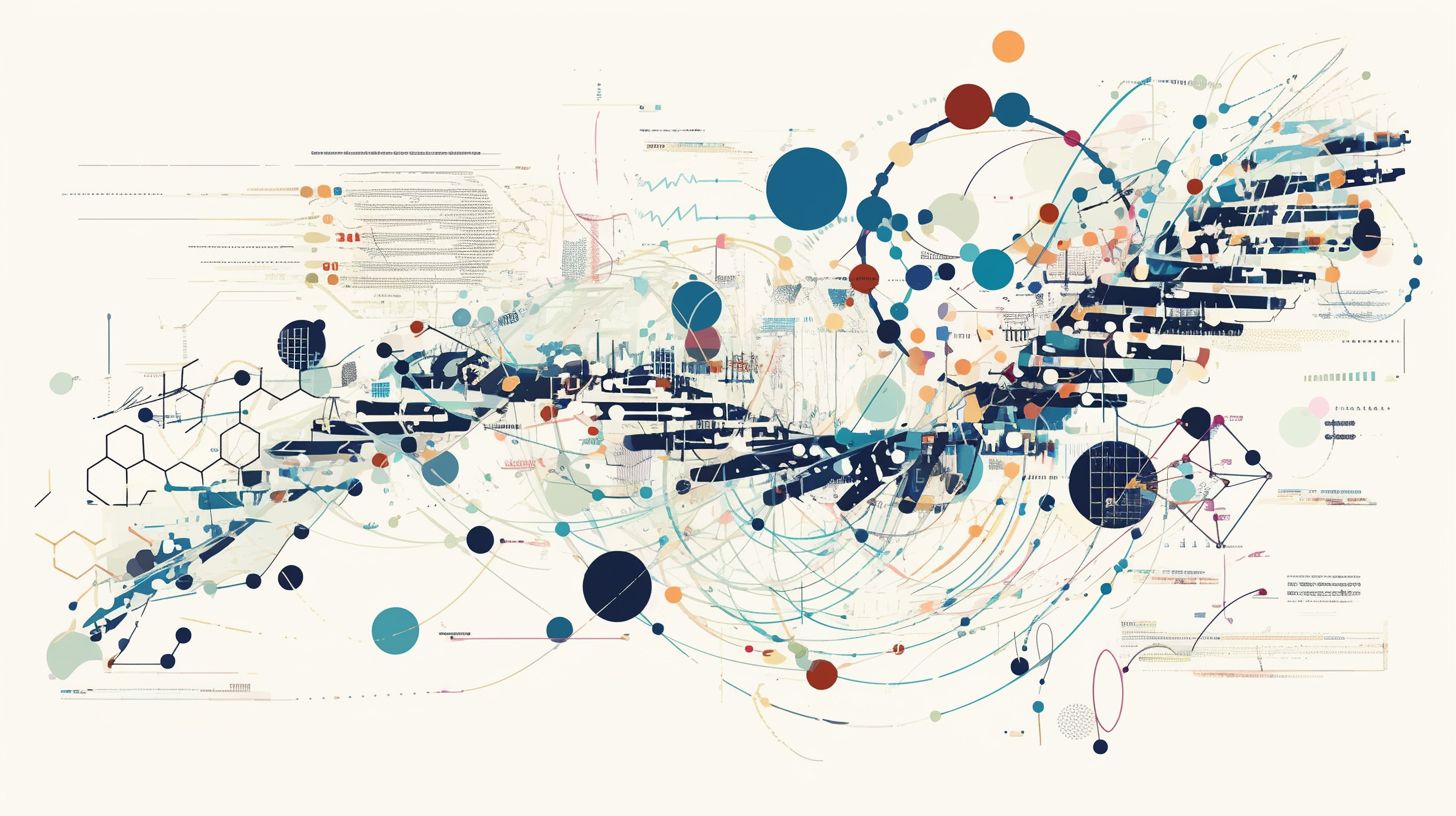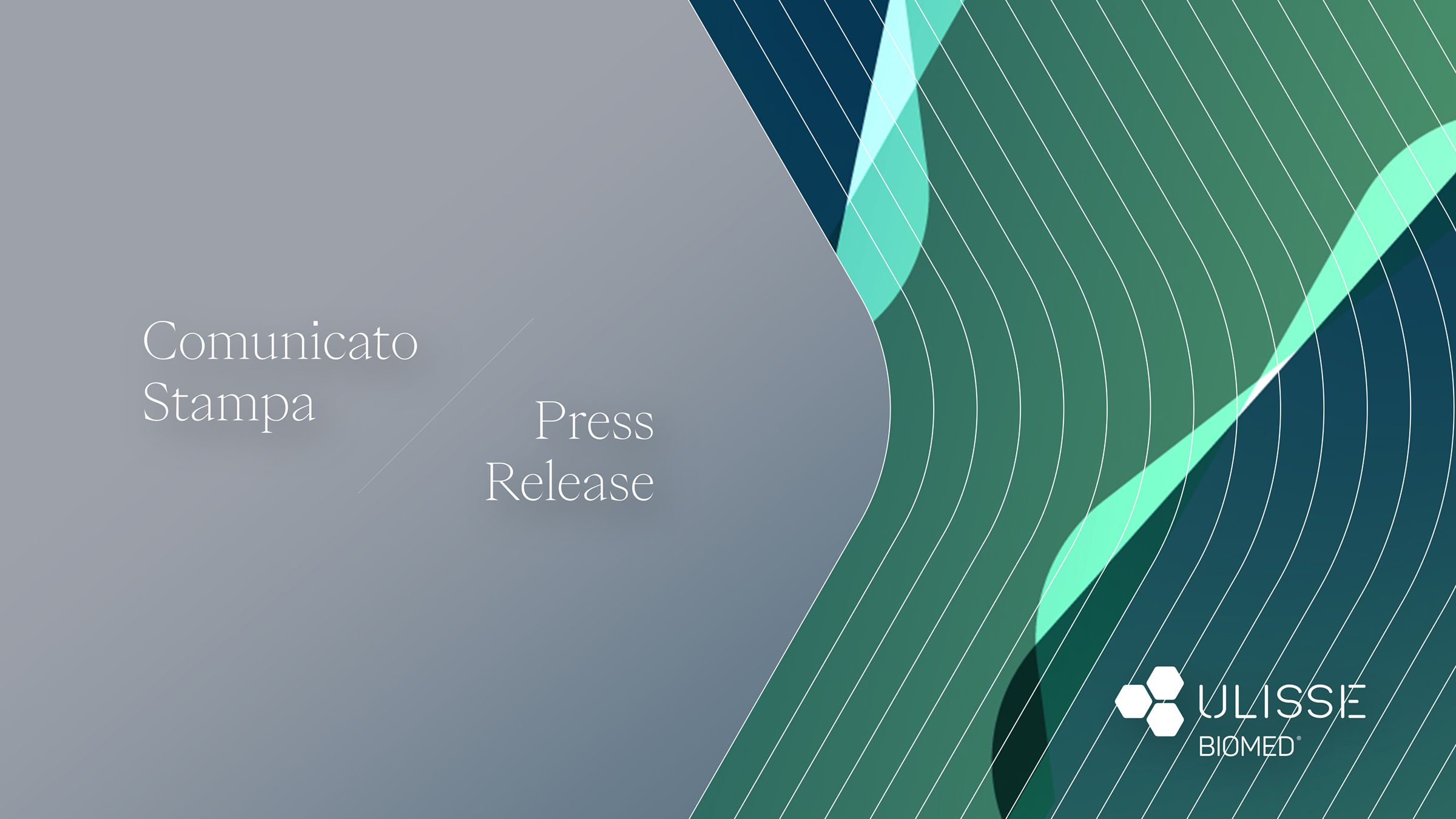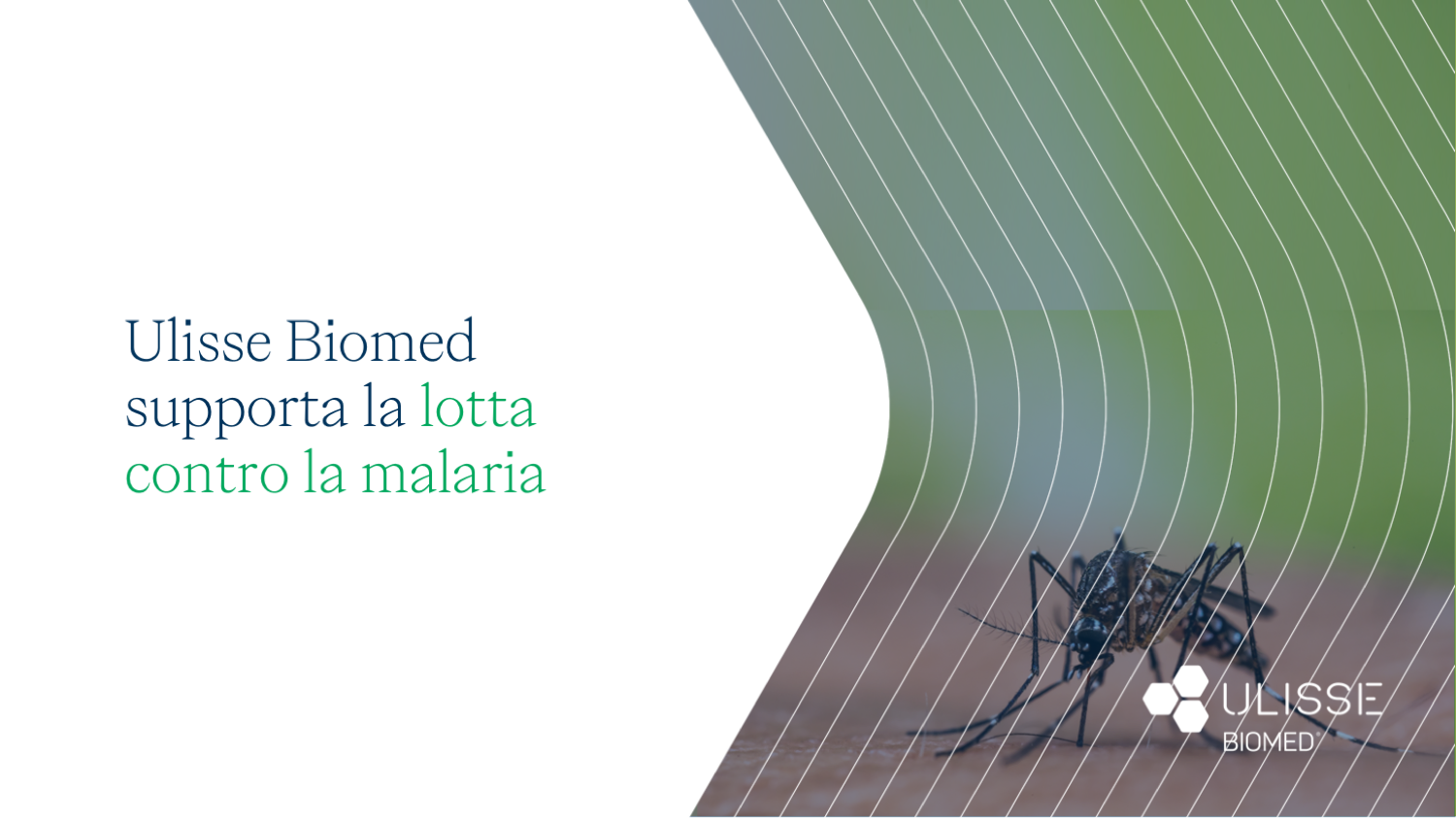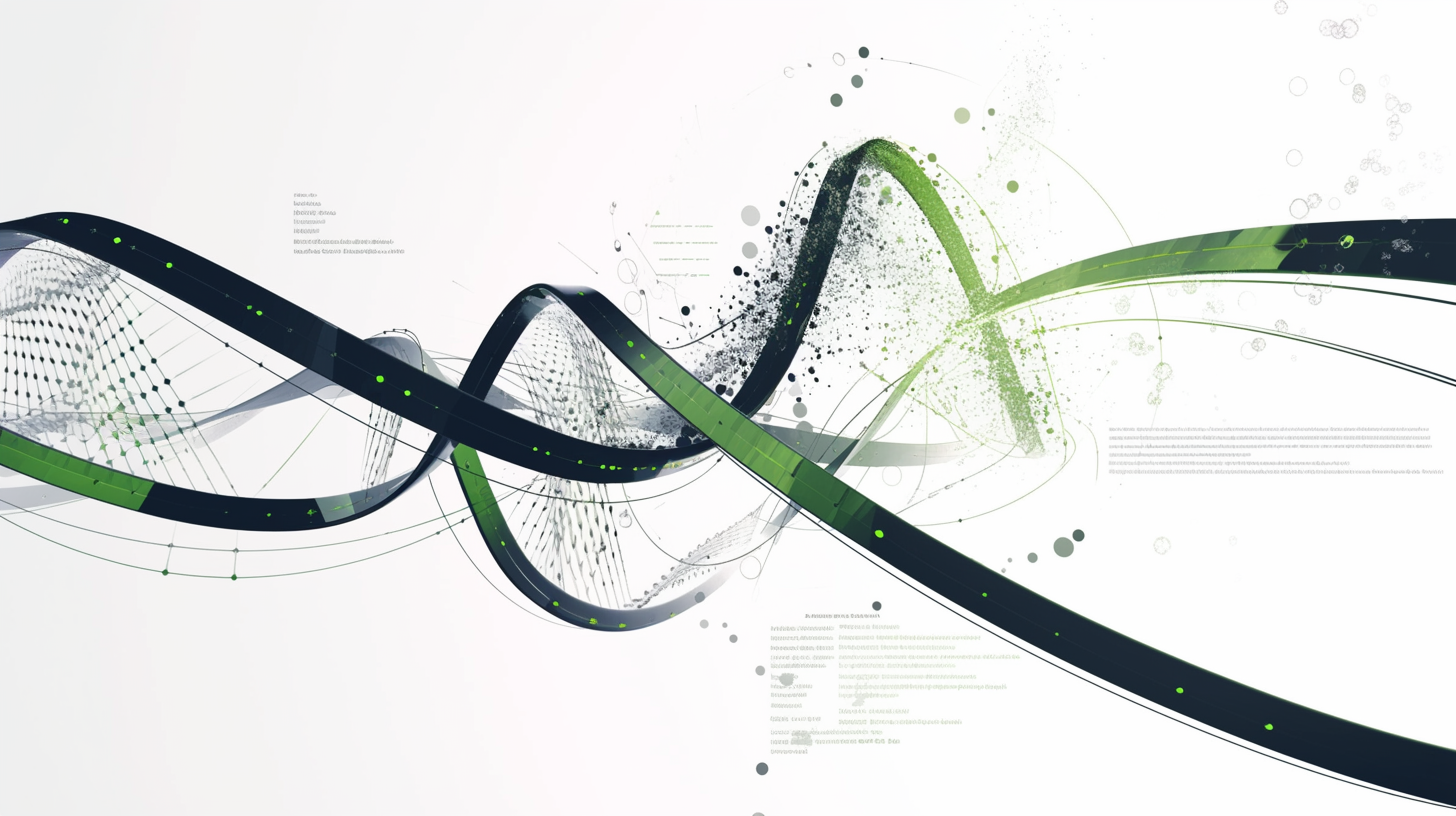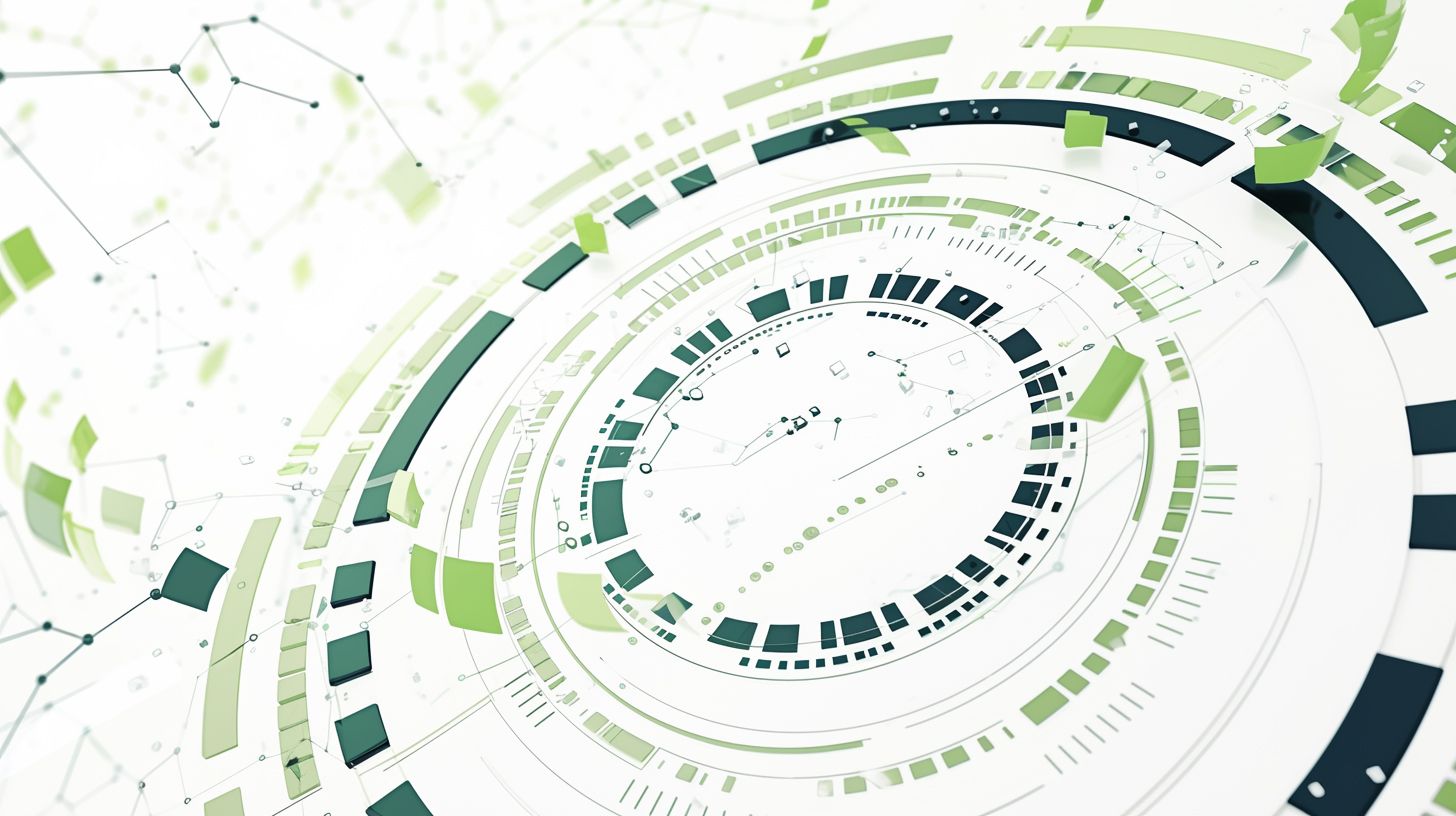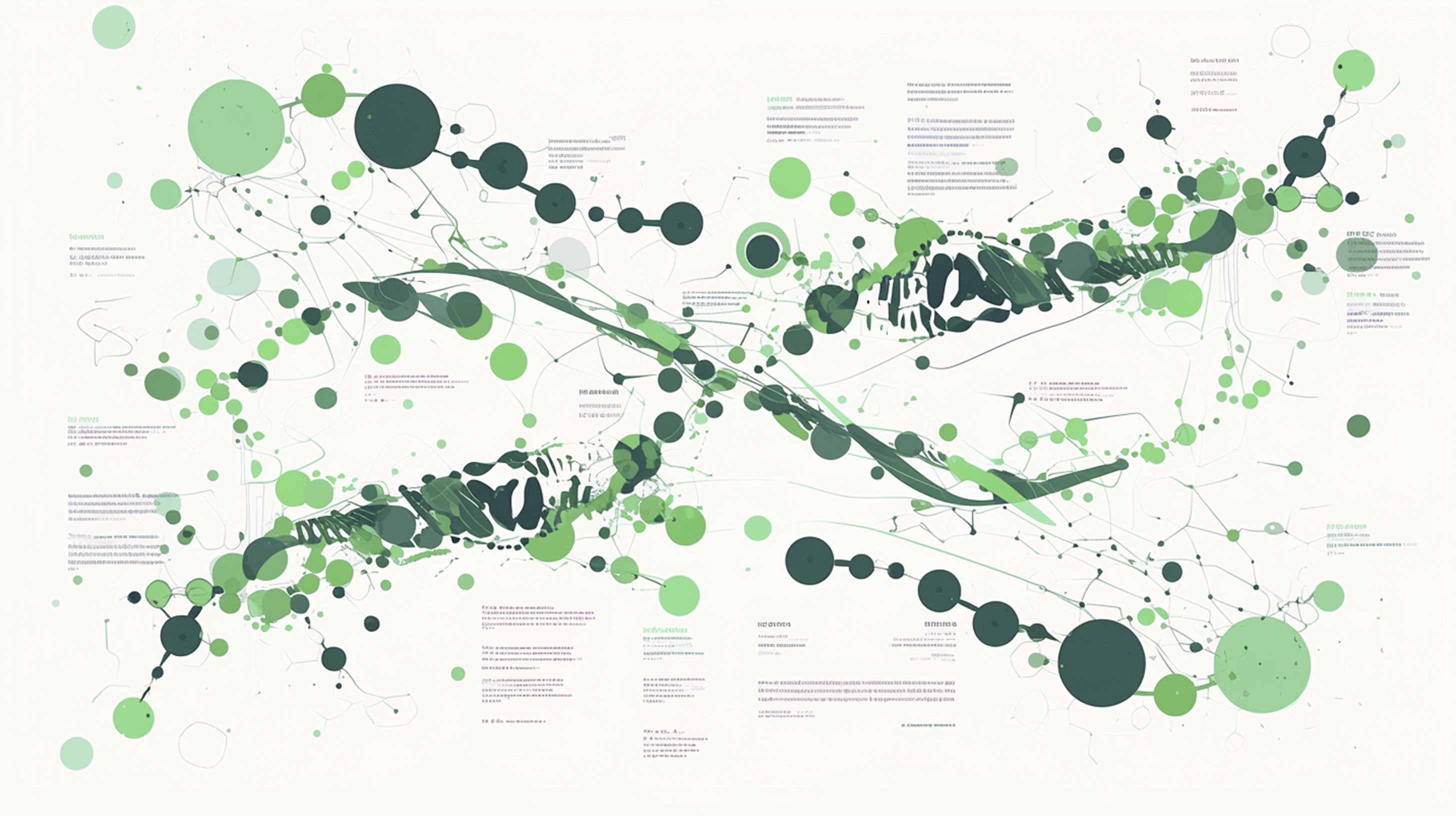Reading time [minutes]: 12
Biotech Innovation and Diagnostics
Artificial intelligence in PCR diagnostics
From Ct curve processing to predictive diagnostics: how Artificial Intelligence enhances every stage of the PCR stream according to Ulisse Biomed
Abstract
Ulisse Biomed has redefined the molecular diagnostics paradigm by adopting artificial intelligence in its Hyris System™. This article explores in depth how AI enables real-time interpretation of Ct curves, automating quality control, enabling predictive diagnostics, implementing predictive maintenance and providing clinical decision support through intelligent interfaces. It includes an exclusive interview with CTO Lorenzo Colombo and shows how Ulisse Biomed is at the forefront of developing a distributed, scalable and intelligent diagnostic ecosystem.
- Snapshot
- Introduction
- 1. Ct curves and artificial intelligence: a new paradigm
- 2. Quality control automation: AI as a molecular sentinel
- 3. AI-based predictive diagnostics
- 4. bGATE and distributed intelligence: amplifying AI through integration
- 5. Continuous learning of diagnostic AI algorithms
- 6. ROI and scalability of AI-PCR solutions for biotech
- 7. Predictive maintenance in intelligent diagnostic devices
- 8. AI-based UX and decision support in diagnostic software
- INTERVIEW - Lorenzo Colombo
Snapshot
- Ct curve
Point at which the fluorescence of the PCR sample exceeds the threshold, signalling the presence of the genetic target.
- bCUBE
Portable real-time PCR device from Ulisse Biomed, cloud-connected and AI-integrated. - bGATE
Hyris System™ gateway connecting third-party tools to the Ulisse Biomed cloud for AI-driven analysis.
- Hyris System™
Ulisse Biomed diagnostic infrastructure consisting of bCUBE, bGATE, bAPP and AI cloud platform.
- Predictive diagnostics
Ability to anticipate the outcome of a test or clinical evolution through advanced data analysis.
- Point-of-Care (POC)
A diagnostic testing modality that allows analysis to be performed directly at the point of care - outpatient clinics, hospital wards, clinic pharmacies, out-of-hospital settings - guaranteeing rapid and reliable results without resorting to the central laboratory. It enables immediate clinical decisions and streamlined workflows, representing the core of professional decentralised diagnostics.
- Automated quality control
Intelligent mechanism that monitors and verifies each diagnostic step in real time.
- bAPP
Cloud software interface that presents interpreted diagnostic results and supports clinical decisions via AI.
- Continuous learning
Mechanism whereby an AI algorithm updates its analytical models as it receives new data, progressively improving accuracy and adaptability.
- Predictive maintenance
AI-based technique to identify drift or fault signals in devices in advance, triggering interventions before malfunctioning compromises diagnostic reliability.
Introduction
Artificial intelligence (AI) is redefining the role of molecular diagnostics in today's world. From a technical tool confined to the laboratory, PCR is evolving into a distributed, intelligent and predictive platform. Ulisse Biomed, through the integration of AI algorithms into its Hyris System™, has transformed the classic PCR test into a connected, adaptive solution capable of optimising the entire diagnostic workflow.
In this article, together with Lorenzo Colombo - Chief Technology Officer of Ulisse Biomed - we will explore the most relevant issues related to the AI-driven evolution of PCR diagnostics, from algorithmic challenges to strategic vision, passing through the future of predictive and distributed medicine.
1. Ct curves and artificial intelligence: a new paradigm
In Real-Time PCR, the threshold curve (Ct) represents crucial information: it indicates the cycle in which the sample's fluorescence exceeds the background level, signalling the presence of the genetic target. Traditionally, the interpretation of the Ct curve was left to experienced operators or semi-automated analysis software. However, variability in samples, reagents or instrumental profiles could introduce significant margins of error. Ulisse Biomed is working on AI-based modules capable of reading and analysing the raw data generated by bCUBEs in real time.
The algorithms, trained on extensive and diverse datasets, are capable of:
- discriminate between real signals and artefacts;
- automatically correct deviations related to technical errors;
- validate or report anomalous data with adaptive confidence thresholds;
- return an interpreted output ready for clinical or operational action【3】.
The result is a Ct curve that is no longer simply observed, but understood and 'explained' by an intelligent system. This change represents a turning point for molecular diagnostics: it means moving from a passive reading of signals to an active and contextual analysis.
From a clinical point of view, this allows clinicians to receive more reliable reports with interpretative indicators and automatic alerts highlighting possible abnormalities. For laboratories, it means being supported in reporting, reducing the time needed for analysis, standardising the interpretation of results and minimising human errors【2】. For health systems, it means greater efficiency, lower economic impact and greater responsiveness in dynamic epidemiological scenarios. Looking to the future, this 'explanatory' capacity of AI may evolve towards increasingly sophisticated forms of augmented diagnostics: systems capable of integrating Ct curves with clinical, genetic and environmental data to formulate complex hypotheses, suggest personalised diagnostic procedures or even indicate potential targeted treatments【1】. In this scenario, the Ct curve is no longer a mere technical value, but an open window into the patient's entire biological and clinical context.
2. Quality control automation: AI as a molecular sentinel
One of the most critical aspects in decentralised molecular diagnostics is to ensure the quality of the data, regardless of the operator's experience or operational context. The AI integrated in the Hyris System™ plays a 'molecular sentinel' role here, monitoring all critical parameters in real time:
- temperature and cycle times;
- optical performance of read channels;
- integrity of fluorescence signals;
- abnormal or atypical amplification profiles.
The system automatically flags potential anomalies, proposes corrective actions and can block or mark tests that do not comply with predefined parameters. This process allows:
- drastically reduce human errors;
- avoid false positives or negatives;
- increase clinical confidence in the data.
These capabilities make quality control automation not only a technical advantage, but also a strategic opportunity for numerous application contexts. Small and medium-sized health care facilities, for example, can benefit enormously from a system that reduces the need for highly specialised personnel for test monitoring. Even in remote or low-tech environments - such as outlying clinics, mobile clinics, military facilities or humanitarian missions - automated quality control allows high diagnostic standards to be maintained without complex infrastructure.
As Lorenzo Colombo points out: "A self-adjusting quality control system is no longer an option, it is the minimum condition to ensure distributed reliability."
In industry, this function can be extended to sectors that need constant and reliable screening, such as agro-food, environmental safety or health production chain controls. Looking forward, the evolution of these modules may lead to zero-click diagnostics, fully autonomous, capable of triggering interventions or predictive maintenance requests without any human input, further enhancing the efficiency and resilience of the whole system【3】.
3. AI-based predictive diagnostics
"One of the most revolutionary developments we are seeing in PCR, and which we believe could be the future, will be the ability of Artificial Intelligence to enable predictive diagnostics," explains Lorenzo Colombo. "In practice, intelligent systems will be able to pick up initial patterns that anticipate the outcome of a test, even before all the data is available." Deep learning algorithms can analyse PCR amplification curves in real time and determine with high reliability whether a sample will test positive or negative well before the cycle is complete. This saves valuable time, reduces the Turn-Around Time (TAT), optimises clinical workflows and triggers proactive decisions in critical settings such as emergency rooms or during an outbreak【1】【2】.
As Lorenzo Colombo, CTO of Ulisse Biomed, notes: 'Anticipating a diagnostic decision even by a few minutes in clinically intensive settings can make the difference between early and late treatment. AI will make this possible in the not so distant future."
In parallel, by combining PCR results with other patient data (age, risk factors, initial symptoms), the algorithm can stratify risk and suggest customised clinical pathways. AI thus adds a cognitive layer to diagnostics: it not only detects whether a genetic target is present, but also better understands what that data means in perspective【6】.
4. bGATE and distributed intelligence: amplifying AI through integration
Alongside the bCUBE, the Hyris System™ platform includes the bGATE: an intelligent gateway that also integrates data from third-party diagnostic tools into the AI-driven system. This transforms the entire diagnostic ecosystem - internal and external - into a cohesive and interoperable network. Thanks to bGATE, it is possible to connect any compatible instrument (e.g. an RT-PCR thermocycler already present in the laboratory) to the Ulisse Biomed cloud and have the data analysed by the same AI algorithms as bCUBE. This allows:
- diagnostic uniformity, with the same interpretation criteria;
- enhancement of existing infrastructure without immediate replacement;
- enhancement of AI database for continuous learning【7】【9】.
The strategic value of the bGATE is its ability to act as a bridge between heterogeneous technologies, enabling a truly distributed, scalable and federated network-ready【4】 diagnostics model. According to Lorenzo Colombo, CTO of Ulisse Biomed: "Distributed intelligence is not just an architectural choice: it is the prerequisite to make every node of the network an active point of shared knowledge." - he adds - "Before bGATE, every diagnostic tool was an island. After bGATE, everything has become part of an ecosystem that learns, communicates and adapts in real time."
5. Continuous learning of algorithms to diagnostics
In traditional AI-based diagnostic devices, the algorithm remains 'stuck' after initial training and does not change with new data. Alternatively, 'adaptive' continuous learning models have been proposed that can update their parameters as they receive feedback from real test data【8】.
To date, no medical device with a continuous learning algorithm is yet fully authorised (neither by the FDA nor Health Canada, until 2022). However, emerging policies indicate that this technology is in rapid development. An article in The Lancet Digital Health (2021) describes how an 'adaptive' AI system could continuously improve accuracy and personalisation by diagnosing with increasing precision by incorporating post-approval data into its model【8】.
Indeed, the performance of such adaptive algorithms is not limited by the initial dataset: over time, they can correct errors and refine their decisions, potentially providing more accurate results than static systems. These perspectives are also reflected in decentralised diagnostics: according to a study published in PLOS Digital Health (2024), maintaining high reliability of point-of-care devices with integrated AI requires continuous updates and re-training of models with new data, avoiding performance degradation over time【9】15】.
In summary, there is evidence that AI models capable of continuous learning (a concept also known as continual learning or lifelong learning) can progressively improve diagnostic accuracy, although their widespread clinical adoption will depend on appropriate regulatory frameworks and rigorous validation.
6. ROI and scalability of AI-PCR solutions for biotech
The integration of AI into decentralised PCR diagnostics is demonstrating measurable operational and economic benefits, which increase its appeal to venture capitalists and ESG funds.
A recent perspective published in PLOS Digital Health (2024) confirms that rapid and connected diagnostic platforms offer systemic benefits due to their connectivity and big data capabilities, improving epidemiological surveillance and public health decisions in real time【9】. From the perspective of laboratories and biotech stakeholders, the scalability of AI-PCR solutions translates into efficiency and recurring revenues. For instance, a Software-as-a-Service model applied to diagnostics - where the portable PCR device generates ongoing revenue from reagents, software updates and cloud services - allows for increased margins and reduced TCO (Total Cost of Ownership) for customers. In fact, a report by Silicon Valley Bank (2024) highlights a very strong financial interest in the sector: 'a quarter of all VC capital in healthcare is now invested in AI-enabled companies'【10】.
On the ESG front, a 2022 thematic analysis on the distributed testing sector underlines the social contribution of decentralised diagnostics: the widespread use of rapid and connected tests has improved access to diagnosis and the timeliness of treatment, reducing hospital stays and optimising care pathways. This leads not only to benefits for patients, but also to a positive impact on the system (e.g. lower total healthcare costs, smaller environmental footprint from transporting samples) - factors appreciated by sustainability-conscious investors【11】.
In summary, the scalability of AI-driven solutions in PCR brings tangible ROI: accelerated reporting times (earlier therapies), reduced operational costs per test, and new revenue opportunities (data and services). These characteristics make such solutions particularly attractive to investors, as they combine profitability and socio-health impact in line with ESG criteria.
7. Predictive maintenance in intelligent diagnostic devices
Another area of innovation is the use of AI/ML for predictive maintenance of diagnostic equipment. Instead of waiting for a device to fail (reactive approach), modern 'smart' systems constantly collect data on operation and employ predictive algorithms to detect early signs of malfunction or performance drift. Recent studies highlight how the integration of AI, cloud computing and diagnostic devices can enable architectures capable of preventing technical anomalies before they impact performance. For instance, predictive maintenance frameworks based on neural networks and temporal analysis of operational data have been successfully tested to anticipate failures in distributed IVD devices [12].
In parallel, models for continuous monitoring of diagnostic performance are becoming more widespread: cloud-based PCR platforms are able to detect drifts (anomalous deviations) in amplification curves or data distribution in real time. This allows recalibration or intervention to be triggered before diagnostic accuracy is compromised. According to the IEEE Journal of Translational Engineering in Health & Medicine, the combination of IoT sensors and AI analytics in cloud-enabled IVD devices is making increasingly fine-tuned predictive maintenance possible: remotely collected clinical usage data are analysed to identify abnormal patterns (e.g. longer cycle times, vibrations, signal dips) and warn of possible problems in advance [13].
The Hyris System™, Ulisse Biomed's proprietary solution, already exploits these opportunities and features intelligent mechanisms for continuous monitoring of instrumental performance and automatic detection of potential functional abnormalities. The system promptly signals any deviation from optimal parameters and, where necessary, autonomously activates proactive verification or assistance protocols. In this way, Ulisse Biomed anticipates the 'self-aware diagnostics' approach as an operational paradigm for the new generation of IVD devices. In short, scientific evidence supports the vision of 'intelligent' diagnostic systems capable of self-diagnosing one's state of health. This translates into fewer unplanned failures, consistent quality of results (thanks to proactive recalibration) and increased operational reliability - key factors in decentralised clinical settings, where technical assistance may not always be immediately available.
8. AI-based UX and decision support in diagnostic software
"An issue that has always been close to my heart is the clinical accessibility of technological innovation," says Lorenzo Colombo. "It is not enough to have a powerful technology: you have to make it understandable, usable and reliable even for non-specialists." User experience (UX) plays a key role when healthcare professionals - often non-specialists in molecular biology - use advanced diagnostic solutions. Intelligent interfaces and AI-based decision support systems can reduce cognitive load and improve the interpretation of results. A known problem may also be subjective reading: inexperienced personnel may have difficulty correctly interpreting unclear outcomes. This limits the scalability and reliability of tests when used outside specialised laboratories. The solution comes from AI: computer vision algorithms embedded in mobile apps or cloud software are able to analyse test results and provide a more objective report. A review published in Nature Communications (2023) reports the case of an LFA system with smartphones and AI (called SMART-AI LFA): this achieved 98% accuracy, outperforming both untrained users and human experts in the interpretation of results【14】.
Another example, the TIMESAVER system, combines deep learning and protocol optimisation to report immunological tests in 1-2 minutes, providing faster and more standardised results than the 15 minutes required by an expert for manual analysis【14】.
Finally, the World Health Organisation and the CDC also emphasise the importance of user-friendly solutions. According to the REASSURED framework, a decentralised diagnostic device must guarantee not only sensitivity and speed, but also an intuitive interface to avoid interpretative errors and improve accessibility to testing【16】.
In conclusion, the adoption of advanced AI interfaces in diagnostic software improves both safety (fewer human errors) and usability. By reducing the cognitive burden on the operator and offering intelligent, guided interpretations, such systems make molecular diagnostics more accessible, distributable and reliable.

INTERVIEW
Lorenzo Colombo - CTO, Ulisse Biomed
Q: Where do you think AI could take us in the near future, as far as aspects of molecular diagnostics are concerned?
L.C.: I imagine systems that can correlate silent signals, contextual clinical data and epidemiological patterns in real time, to anticipate outbreaks, mutations, or even predict therapeutic impact before administration. It is not just a matter of increasing accuracy, but of transforming the entire paradigm: moving from reactive diagnostics to anticipatory diagnostics. And in this context, microbiota analysis plays an enormous role. An intelligent reading of its variations could anticipate chronic conditions, metabolic imbalances or even future predispositions. And this, for me, is a revolution that we are writing day after day.
Q: So in your opinion AI could even replace 'human' work in diagnostics?
L.C.: No, I don't believe in such a scenario. Diagnostics is about interpretation, experience, clinical context. AI can process large volumes of data, identify hidden correlations, and offer extraordinary support, but it cannot replicate clinical intuition, accountability, or even human confrontation between experts. To think that it is enough to 'push a button' is reductive, and risks trivialising a field that requires continuous training, critical sense and awareness. AI, if used well, can free up time and resources, but the heart of the decision will remain - and must remain - human.
Q: And in this hypothetical future scenario, what role does Ulisse Biomed intend to play?
L.C.: It is not just a hypothesis, it is a trajectory that is already underway. We are building the infrastructure for that future to really exist. The goal is clear: to make every device an intelligent node, every piece of data a useful element for the entire ecosystem, every report an informed decision. We are not talking about a diagnostic that adapts passively, but one that learns, evolves and guides. We want to be the backbone of this distributed network, the point where technology and vision meet to change the way medicine is done, everywhere.
Sources and bibliography
(1) Rapid deep learning-assisted predictive diagnostics for point-of-care testing. Lee S., Richards K., Singh P., et al. Nature Communications. 2024. https://doi.org/10.1038/s41467-024-46069-2 (Nature, PubMed)
(2) Development, validation, and implementation of an augmented multiwell, multitarget quantitative PCR for the analysis of human papillomavirus genotyping through software automation, data science, and artificial intelligence. Pereira R., Van den Bruel N., et al. Journal of Molecular Diagnostics. 2024. https://doi.org/10.1016/j.jmoldx.2024.05.012 (PubMed)
(3) Machine-learning PCR thermocycler development. McDonald C., Harrison J., et al. Genes. 2024. https://doi.org/10.3390/genes15091196 (PubMed)
(4) Bridging diagnostic platforms through intelligent gateways. Ghosh A., Singh V., et al. NPJ Digital Medicine. 2025. https://doi.org/10.1038/s41746-025-00876-3
(5) PCR.ai clinical deployment evaluation. MacLean A. R., Gunson R. N., et al. Journal of Clinical Virology. 2019. https://doi.org/10.1016/j.jcv.2019.08.005 (PubMed)
(6) Artificial intelligence in microbiological diagnostics: a new frontier for clinical accuracy and predictive care. Al Khalil M., Thompson R., et al. The Lancet Microbe. 2024. https://doi.org/10.1016/S2666-5247(24)00123-7 (Wiley Online Library, MDPI)
(7) IoT-PCR with cloud-based epidemiological mapping: a model for AI-distributed diagnostics. Lei Y., Wang Z., et al. Biosensors and Bioelectronics. 2020. https://doi.org/10.1016/j.bios.2020.112345 (PMC)
(8) Adaptive AI and continual learning in medical diagnostics. Topol E. J. The Lancet Digital Health. 2021. https://doi.org/10.1016/S2589-7500(20)30187-4
(9) Beyond diagnostic connectivity: Leveraging digital health technology for the real-time collection and provision of high-quality actionable data on infectious diseases in Uganda. Mujuni D., Tumwine J., Musisi K., et al. PLOS Digital Health. 2024;3(8):e0000566. https://doi.org/10.1371/journal.pdig.0000566 (PLOS)
(10) Healthcare Investment & AI Spotlight Report. Silicon Valley Bank. 2024. https://www.svb.com/globalassets/library/uploadedfiles/healthcare-ai-investment-report-2024.pdf (svb.com)
(11) Point of Care Diagnostics Industry ESG Thematic Report, 2023. Grand View Research. 2022. https://astra.grandviewresearch.com/point-of-care-diagnostics-industry-esg-outlook (astra.grandviewresearch.com)
(12) AI-based predictive maintenance in clinical laboratory systems: a cloud-integrated framework. Patel V., Mehta S., et al. Computers in Biology and Medicine. 2023. [Link pending DOI lookup]
(13) IoT Based Predictive Maintenance Management of Medical Equipment. Shamayleh A., Awad M., Farhat J. Journal of Medical Systems. 2020;44(4):72. https://doi.org/10.1007/s10916-020-1534-8 (PubMed)
(14) Sample-to-answer platform for COVID-19 using a deep learning-assisted smartphone LFA. Lee S., Richards K., et al. Nature Communications. 2023. https://doi.org/10.1038/s41467-023-38164-x (PMC)
(15) The potential of digital molecular diagnostics for infectious diseases in sub-Saharan Africa. Digital Diagnostics for Africa Network. PLOS Digital Health. 2022;1(6):e0000064. https://doi.org/10.1371/journal.pdig.0000064 (PLOS)
(16) REASSURED criteria for diagnostics in decentralized settings. World Health Organization. 2021. https://apps.who.int/iris/handle/10665/340121

